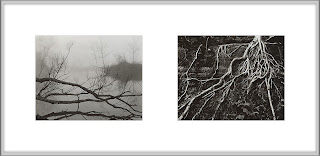For a number of years I had settled into a routine with my large and medium format equipment. One wide angle lens, one normal lens, and one or two longer lenses. All of fixed focal lengths as I've never gotten on with zoom lenses despite their obvious appeal and several attempts. After transitioning to an all digital workflow in 2016 I assumed I would simply duplicate those lens choices and be on my way.
I'm not sure if it was the aspect ratio change from 4x5 to the longer 3x2 or simply a change of taste after nearly 20 years of photography but I was never quite happy with those lenses after the switch. In "full frame" speak, which is what I use, a normal lens has a 50mm focal length or a 47 degree angle of view (on the diagonal). My wide angle has a 24mm focal length or an 84 degree angle of view. And of course the longer focal length lenses have a much narrower angle of view which makes distant objects appear closer and the scene look more compressed.
I came to realize that there's quite a large gap between my 50mm and 24mm lenses. So I picked up an old Minolta 35mm lens which seemed to fit nicely in between them and my photography has not been the same since. Suddenly the 50mm felt like a long lens and the 24mm looked rather wide. I still use them both but that 35mm focal length felt just right to me. Maybe not exactly what my eyes see but how they see.
My best description of the 35mm focal length with its 63 degree angle of view would be this: a telephoto wide angle. An oxymoron for sure yet precisely how it feels. From longer distances it allows me to capture what appears to be a wide field of view without much distortion. From middle distances the 35mm lets me pick out the most important details of a scene while still feeling natural. And up close I'm able to include a bit of context while highlighting a specific subject. A long wide angle or a wide long lens... Either way I approach it the lens simply provides a most comfortable field of view and lets me focus on visual relationships and light in a decidedly natural way.
I still have and use my other focal lengths but the 35mm is responsible for at least fifty percent of my keepers now. And when I go out with only one camera and one lens, it's almost always one of my 35s. That's right, I love it so much I have two; a small f2.8 pancake model, and a much larger f1.4 version for low light and shallow depth of field situations. Part of me wishes I had found this goldilocks perspective earlier in my photography but finding it now has been quite exciting and reinvigorated my work in a way. So, I'll just be grateful for discovering it when I did. Of course 35mm is one of the most popular lenses around so maybe "discovering" isn't quite accurate, but again, that's how it feels.










